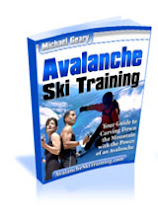
Your Child Should Have Soccer Cleats
A bold statement. Let me qualify that assertion.
First of all, as I stated on the Equipment for Soccer Page, soccer shoes or cleats are not a requirement of FIFA. I recommend them because I have seen some bad spills on wet grass and muddy fields.
Tennis shoes simply don’t get the job done when your child is playing in less than perfect conditions.
Trust me. Your child will play on some very wet and muddy fields. Well, unless you are playing indoor soccer.
Of course you should refer to the local soccer league rules. They may require cleats.
Second, my approach to this is as a frugal parent. I know you can't believe it but it's true.
You can’t play soccer in baseball cleats but you can play baseball in soccer cleats.
This is what I have done in the past with my son & what I recommend for U8 or younger players.
(Actually if you don’t mind cutting on a shoe you can make a baseball cleat acceptable by cutting off the toe cleat.)
Below are two picures. The picture on the left is of soccer shoes or cleats and the one on the right is of baseball cleats. You can see the missing toe cleat on the soccer shoes.

Hopefully by the U10 or U12 level your child will be over the baseball fetish & will devote his/her time completely to soccer. Right?
A good pair of cleats IS important, but not critical. After all, soccer is about using your foot, right? You should purchase a good, solid pair of shoes. Soccer shoes are also designed to give a person better feel and control of the ball whereas tennis shoes frequently have bulky laces and tongues.
As equipment for soccer goes, cleats can be relatively expensive. Check your local discount stores first. There is no need to buy the best soccer shoes until your child can wear them for more than one year OR unless they will be getting serious use out of them on a travel team.
LETS HAVE MORE DETAILED LOOK:
Types of Cleats
Footwear for soccer depends on a number of factors: the level of your game, the types of fields you play on, and how much you want to spend. Most leagues require you wear the proper type of soccer cleat during play, so it is most important to understand which type you need.
Molded cleats
Basic soccer shoe design
Non-removeable rubber, or hard plastic formed on the bottom of the shoe is used to help provide traction and control
Ideal for beginning and intermediate level players
Suited for play on almost all field types and in all weather conditions
Required by many youth programs for safety reasons

Detachable cleats
Feature studs on the bottom that can be screwed on and off and be replaced easily
Cleats vary in length and are usually made of hard plastic or plastic with metal tips
The type and length of the studs can be changed depending on the weather and field conditions of that day's game or practice
Ideal for experienced players who can tailor the cleats to their playing field and weather conditions
Suitable for use on wet, soggy fields, or on well-groomed, soft grass fields

Turf shoes
Contain various raised patterns on the bottom in place of studs, for use on harder outdoor surfaces and on artificial turfIndoor shoes
Generally good training shoes that could serve as a back-up game pair for hard-surface conditions
SandalsResemble low-cut, lightweight sneakers. Designed for playing indoor soccer in a gym or recreational facility
Feature a flat, rubbery-type bottom for better traction on indoor courts and fields
Required by many indoor soccer facilities when playing on artificial turf, so the turf does not get torn up
An important footwear add-on for all soccer playersMaterials
Worn before the game to save wear on your soccer shoes
Easy to slip on and off when soccer socks and shin guards are on
Allow you to immediately remove your playing shoes after a game to rest your feet
Many sandals have special massage-type features for the bottom of the foot for added comfort
Soccer shoes come in two basic materials: leather and synthetic. The pair you purchase will largely depend on your skill level and how serious you are about the sport.
Leather
Offer the best feel and fit of any soccer shoe, but are also generally more expensiveSynthetic
Full-grain leather shoes are strong and durable, while variations such as Kangaroo leather are more flexible and offer an even beter feel
The softer the leather, the better the feel for the ball, but also the less durable
the shoe
Absorb more water than synthetic shoes and are not recommended for constant use on wet fields; however, water treatment options are available
Ideal for most entry and mid-level players
Generally less expensive than leather shoes, but do not offer as good a feel and do not last as long as a well-cared for leather boot
Generally contain some sort of water treatment and therefore last better under poor playing conditions
Easier to clean and dry out than leather shoes












